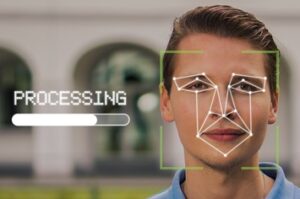
There is public support for the police’s use of facial recognition to solve and prevent crimes – even in traditionally more skeptical countries such as Denmark. Here, a new opinion poll shows that 84 percent have a positive attitude. However, trust in the technology depends on politicians and authorities establishing clear rules for the protection of data and privacy.
Whether it is recorded video material used to solve crimes, or live images that, for example, can identify unwanted hooligans at a football stadium, public support for the use of facial recognition is quite significant.
In Denmark 84 percent support the use of facial recognition in connection with the prevention and solving of crime and terrorism. The support spans across age, gender, and geography, according to a nationally representative analysis conducted by Norstat for Milestone Systems.
But the support has strings attached. 70% of Danes see clear rules, data protection, and transparency about how and where the technology is used as the most important factor for their trust. Additionally, 51% consider it crucial that data is deleted as soon as it is no longer relevant to a case.
“The support for facial recognition also obliges. Therefore, politicians and authorities must get started on creating clarity about rules, responsibility, and protection of our data. It is fine that they are currently operating within a pilot scheme, but it is urgent to look at more permanent regulation of facial recognition,” says Thomas Jensen, CEO of Milestone Systems.
Danish Milestone Systems develops and sells data-driven video technology and analysis tools used in, for example, airports, by police, traffic control, companies, hospitals, and stadiums worldwide.
“It is crucial to have clear and transparent regulation if we are to maintain the public’s support and trust in the technology and the authorities. At the same time, there must be security for how facial recognition data is stored and deleted when it is no longer relevant. It could be 30-60 days,” says Thomas Jensen.
The technology is used today for everything from verification – such as when you open your Iphone, show a badge, or go through passport control – to recognising a specific person at, for example, a sports venue.
“In addition to all the practical and well-known applications, modern AI-driven facial recognition is also a powerful tool that can help both solve and prevent crimes,” says Thomas Jensen.
Although the public’s knowledge of the technology behind facial recognition is relatively low, the attitude is positive. The new survey shows significant support for using facial recognition technology in cases of murder (88%) and serious violence and rape (87%). Likewise, 81% believe that facial recognition should be used to prevent and solve terrorism by quickly identifying known terrorists.
“Clear rules and regulations are one thing. There is still a need for common sense and human judgment,” says Thomas Jensen. “Technology is not always perfect – this also applies to facial recognition. Therefore, two trained operators should verify with their own eyes when the software finds a face match: a picture in a database that matches a picture from a video recording of, for example, a wanted criminal or a hooligan.”
He highlights that although most respondents in the survey support the police’s use of facial recognition in their work to protect citizens, prevent, and especially solve crimes, “but that trust and support also obliges to create clarity and frameworks,” he emphasises.











